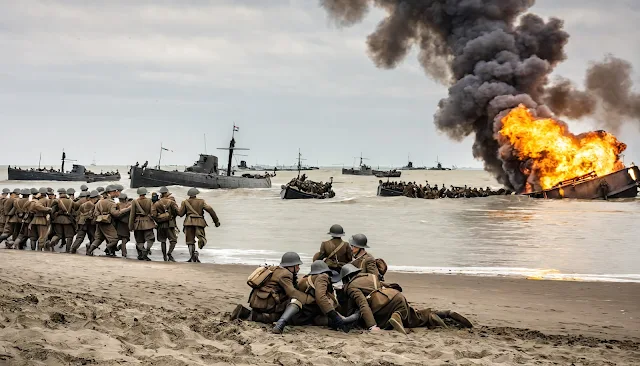The Miracle at Dunkirk: A Tale of Survival and Unity
In the spring of 1940, during World War II, the Dunkirk evacuation became a pivotal moment in the conflict and a testament to human resilience and unity. Faced with the imminent threat of defeat, hundreds of thousands of Allied soldiers found themselves trapped on the beaches of Dunkirk, France, surrounded by advancing German forces. The story of their miraculous escape is filled with bravery, desperation, and the unexpected heroism of ordinary civilians.
The Context of the Evacuation
By May 1940, Germany had launched a rapid and devastating invasion of France. The Blitzkrieg tactics employed by the Germans overwhelmed the Allied forces, leading to a retreat to the coastal city of Dunkirk. Over 400,000 British and French troops found themselves cut off from the rest of the Allied armies, with their backs against the English Channel.
As the German forces closed in, the situation grew increasingly dire. The beaches of Dunkirk were jammed with soldiers, vehicles, and supplies. The prospect of a mass surrender loomed large, threatening not only the lives of the soldiers but also the future of the British military effort in Europe.
Operation Dynamo: The Evacuation Plan
Recognizing the urgency of the situation, British Prime Minister Winston Churchill authorized Operation Dynamo, a daring plan to evacuate the stranded troops. The British military set out to rescue as many soldiers as possible under the cover of the Royal Air Force (RAF), which would engage the Luftwaffe in aerial battles to protect the evacuation efforts.
However, with the military ships being too large to navigate the shallow waters near the beach, the British government issued a call for civilian vessels to assist in the rescue. This plea resonated across the nation.
The Response of Civilians
From May 26 to June 4, 1940, a flotilla of civilian boats, ranging from fishing trawlers to pleasure yachts, answered the call to action. Ordinary men and women embarked on perilous journeys across the English Channel, risking their lives to save the stranded soldiers. Among them was Mr. Charles Lightoller, the second officer of the Titanic, who took his yacht to Dunkirk, helping to evacuate men from the beaches.
As these civilian vessels arrived at Dunkirk, they were met with scenes of chaos and desperation. Soldiers, exhausted and frightened, waded through the water to reach the boats. Each small vessel that made it back to England carried precious lives and provided a glimmer of hope.
The Evacuation Under Fire
The evacuation was fraught with danger. German forces relentlessly bombed the beach and the ships, targeting the vulnerable vessels as they attempted to rescue the troops. The RAF engaged in fierce dogfights with German planes overhead, trying to provide cover for the evacuation.
Despite the chaos, the operation continued with remarkable efficiency. Over the course of nine days, more than 338,000 soldiers were evacuated from Dunkirk, a feat that seemed almost impossible given the circumstances. The bravery of the civilian sailors, alongside the military personnel, turned the tide of what could have been a complete disaster.
The Aftermath and Significance
The evacuation of Dunkirk, although a tactical retreat, was hailed as a miraculous success. The successful rescue of over a third of a million soldiers allowed the British Army to regroup and fight another day. The event became a symbol of hope and resilience during a dark time in history.
Churchill famously described Dunkirk as “a miracle of deliverance,” emphasizing the courage of both the military and civilian efforts. The event was immortalized in literature, film, and collective memory, serving as a reminder of the strength that emerges in unity during times of crisis.
In the years following Dunkirk, the resolve of the Allied forces only strengthened. The successful evacuation became a rallying point, galvanizing support for the war effort and demonstrating that despite dire circumstances, hope and bravery could prevail.
The Dunkirk evacuation remains one of the most remarkable stories of survival and unity in history. It highlights the extraordinary lengths ordinary people will go to in times of crisis, and it serves as a powerful reminder of resilience in the face of adversity. The bravery displayed during those harrowing days in 1940 continues to inspire generations, a testament to the enduring human spirit.

